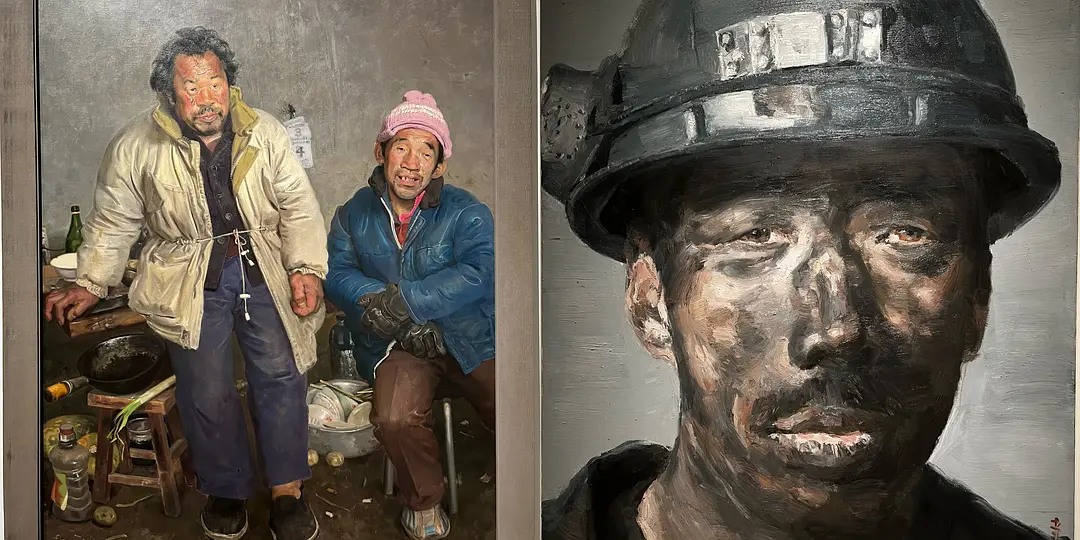Dafen oil painting Village
Between Light and Shadow: A Journey Through Oil Paintings
Last month, I visited the AAC Special Exhibition at Artron Art Center. Initially, I went just to see works by my favorite artists, Xiao Dong and Yu Hong. But to my surprise, the small exhibition space also housed several deeply memorable pieces — like Xin Dongwang’s Melting Winter and Xu Weixin’s Miner Li Guoqing.
AAC Special Exhibition — Melting Winter (left) & Miner Li Guoqing (right)
I recently heard that another exhibition featuring well-known oil painters opened at Sea World Art Center. I visited yesterday and was pleasantly surprised to see another miner-themed work by Xu Weixin — part of the same series.
The exhibition is titled A Life of Gratitude, and it’s one of the richer, more diverse shows I’ve seen recently. Definitely worth a visit. The only downside was the lighting setup — there were multiple areas with glare, and some darker-toned paintings were hung too close to large windows, which seemed a bit careless. The limited gallery space also made the paintings feel cramped. Larger works didn’t have enough room to be properly appreciated, which was unfortunate.
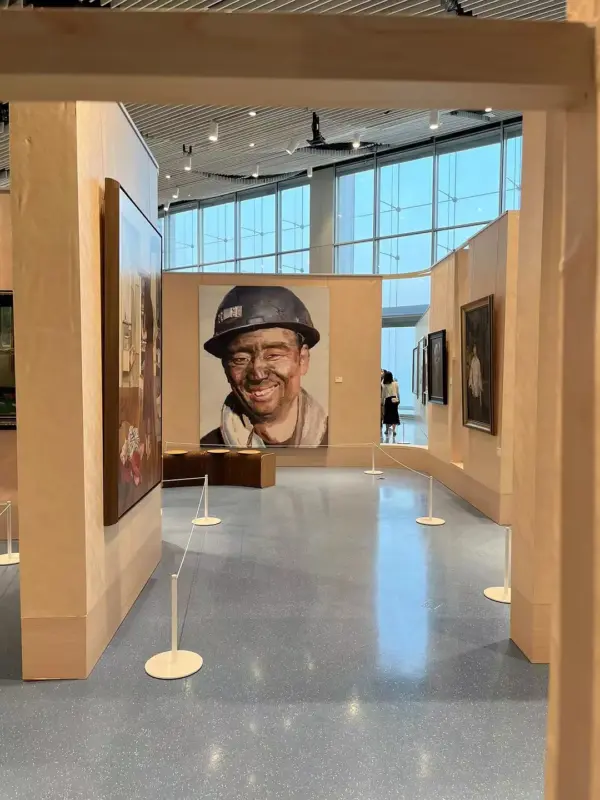
Xu Weixin’s Miner
At the entrance, two highly eye-catching portraits by Li Guijun drew immediate attention. His style is known for realism, and his paintings have an ultra-clean, brightly lit look with subtle color combinations. But perhaps because they are too perfect, they begin to lose a sense of reality — they almost feel like retouched photographs.
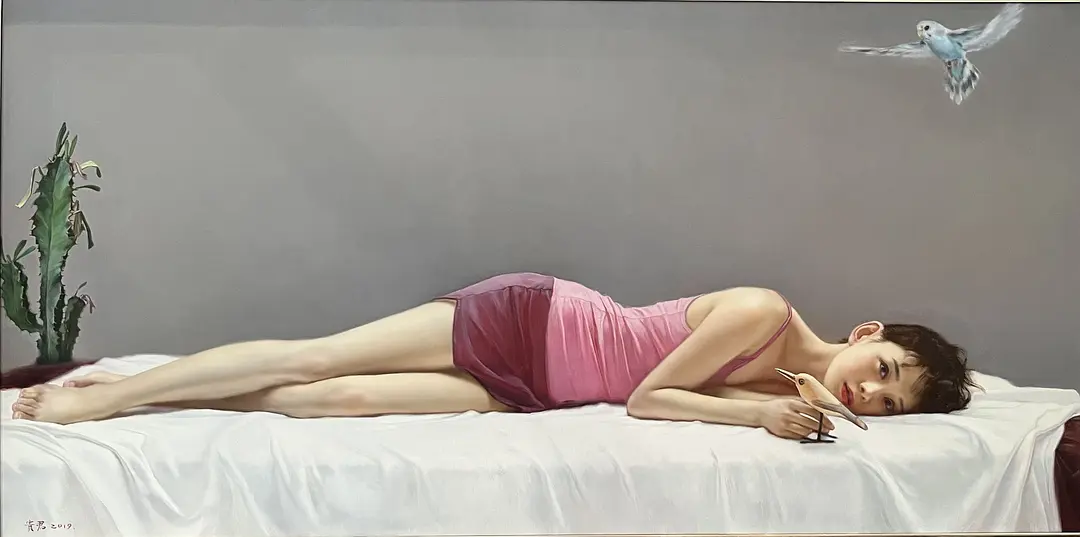
Li Guijun — Reality and Illusion
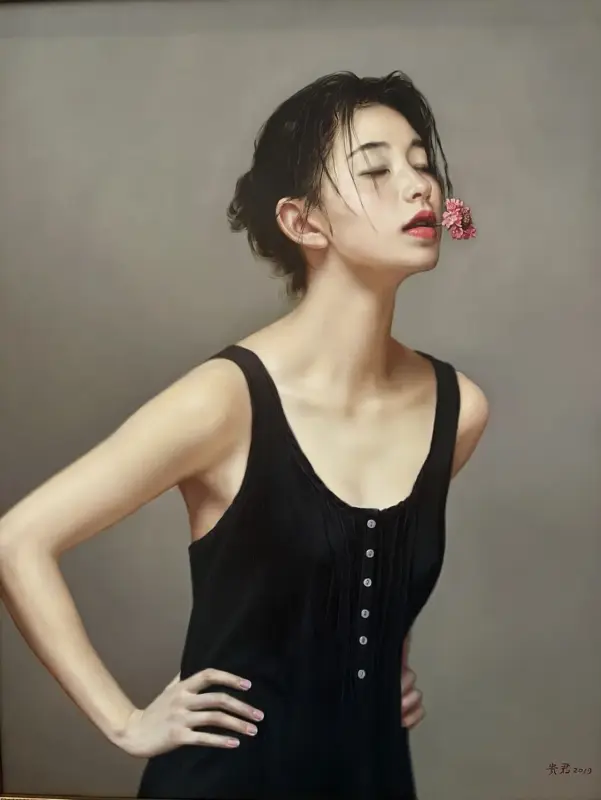
Li Guijun — Chen Xiang (Agarwood)
Now let’s look at two very different works — full of story and emotional resonance. These are pieces I loved.
In Dreaming in the Cauliflower Field, the intensity of light conveys a scorching heat. The upright sunflowers only heighten the sense of summer’s blaze. And in the shade, a figure sleeps soundly — creating a rare moment of movement and sound within a still painting.
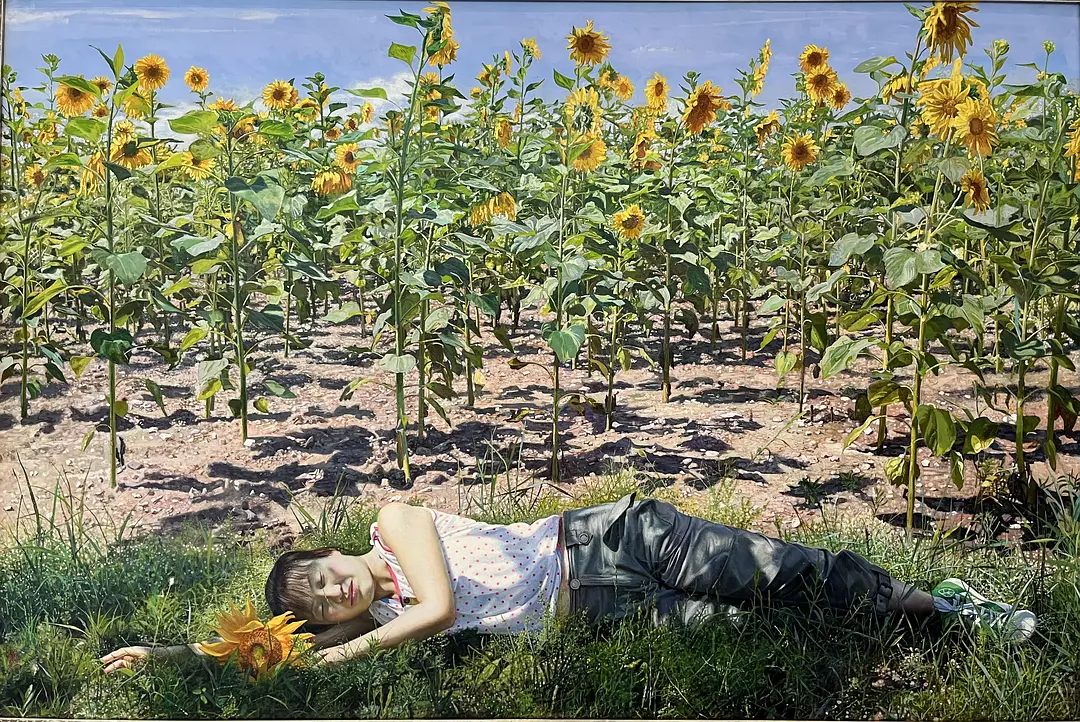
Xu Xiaodong — Dreaming in the Cauliflower Field
The One Who Waits shifts instantly from bright tones to muted, grayish hues. The drifting smoke suggests a breeze passing beneath a bridge. The dated military-green jacket and old-fashioned glasses create a sense of time dislocation. Was this painted in the past or in the present? Either way, the tension between the vacant gaze of the subject and the title The One Who Waits is powerful — an ambiguity that reminded me of something Xiao Dong once said: “There are no ‘minor characters’ in my paintings.”
I believe art is not only about creation but also about reflection and revelation. Artists have a responsibility to respond to their times and society. Just as Picasso expanded the possibilities of painting through abstraction, I think classical realism is equally important — because it makes art accessible and emotionally engaging. And that emotional impact is one of the most effective ways to shake off numbness. It brings us into contact with neglected histories or alternative lives, reawakening our sensitivity.
Artists use their sharp perception and expressive power to capture change — and within that change, they reveal something timeless. That’s where the vitality and charm of art lies.
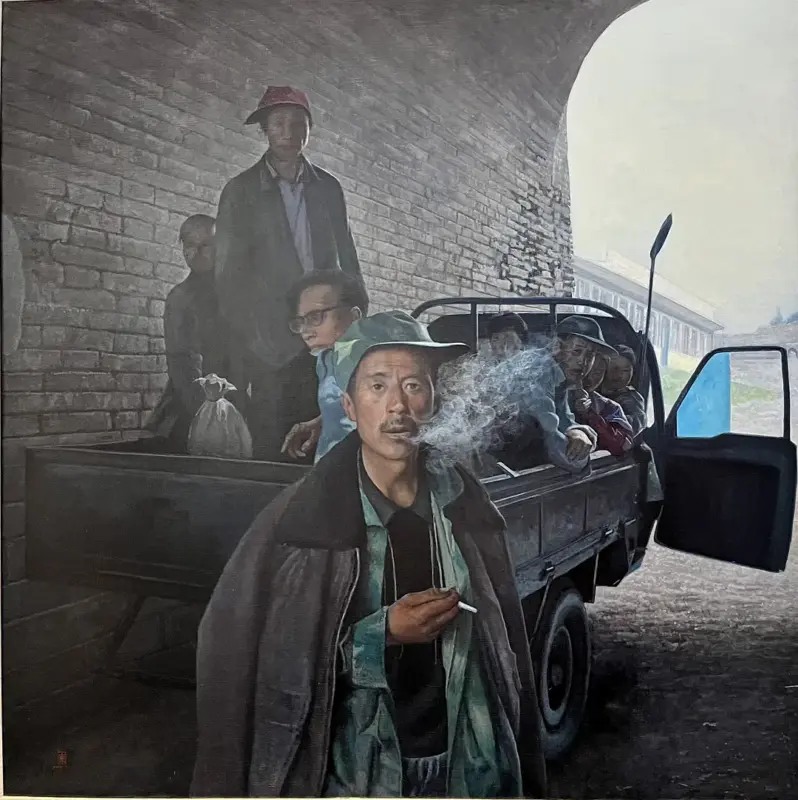
Xu Xiaodong — The One Who Waits
When we first look at a painting — knowing nothing about it — our eyes tell us what beauty is. Beauty is harmony, especially in color. For instance, in the following two works by Chen Yanning: in New Year’s Day, large blocks of festive red are paired with black trim, vibrant but not tacky. In Peacock Fan, deep blacks are balanced with white and gold accents, and a peacock green fan adds the perfect touch of elegance.
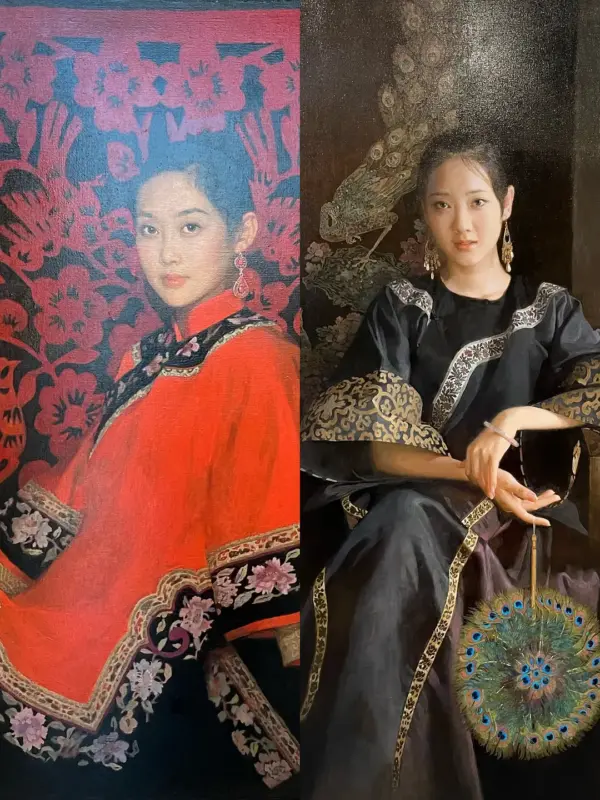
Chen Yanning — New Year’s Day and Peacock Fan
Now let’s appreciate a few richly colored pieces. In A Distant Place by Zhan Jianjun, we see a warm, gentle transition across one color family — from golden wheat to orange, red, and brown.
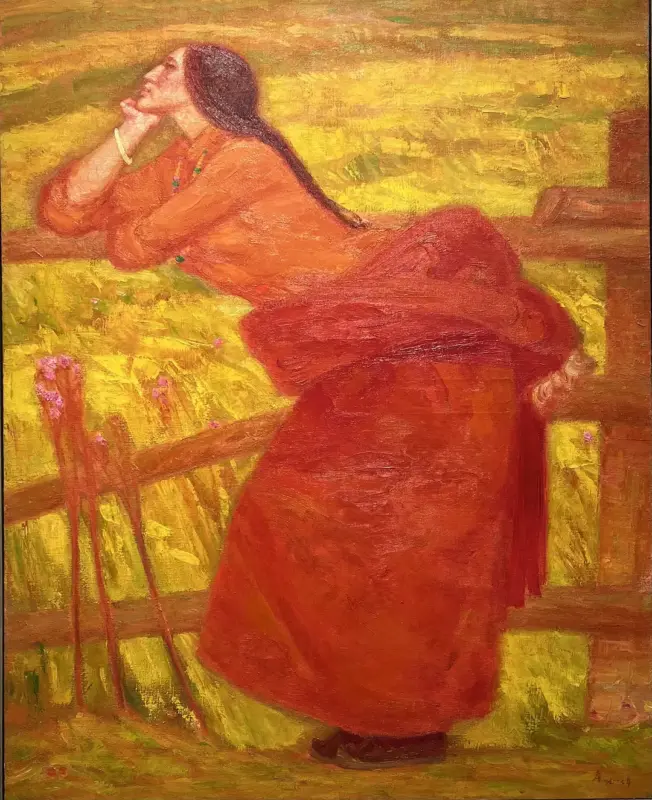
Zhan Jianjun — A Distant Place
In Green Symphony by Zhong Genglue, vibrant greens dominate the canvas with stark light and shadow contrasts. The young, unripened bananas emphasize firmness and freshness.
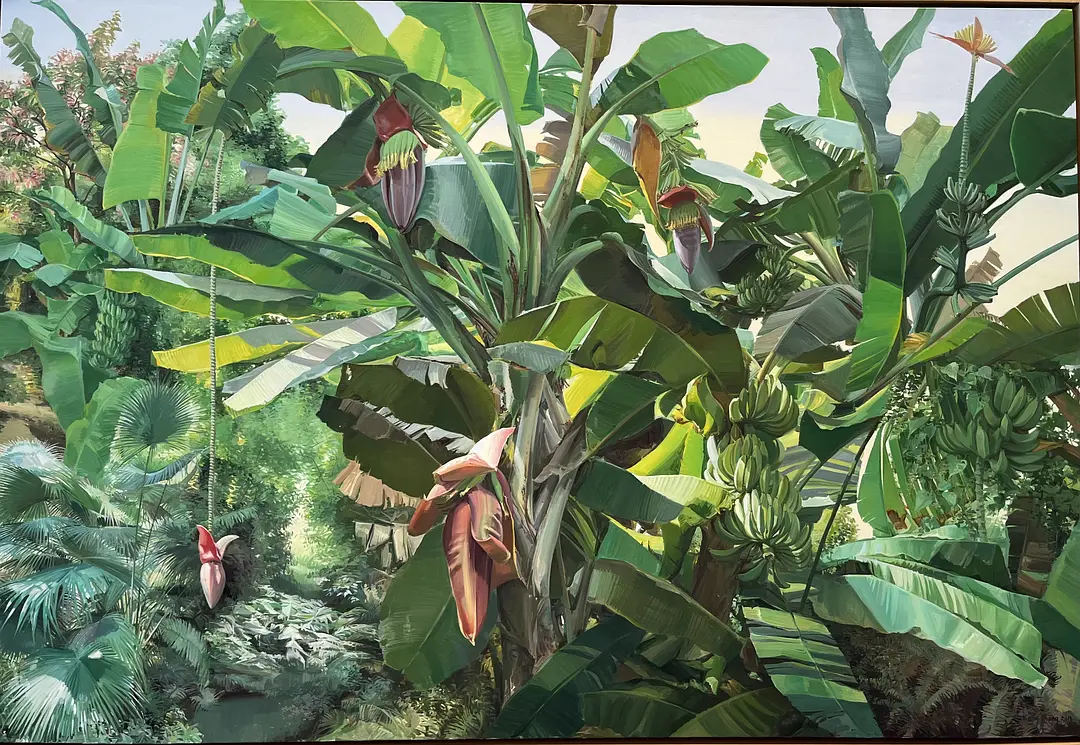
Zhong Genglue — Green Symphony
White Notes, also by Zhong Genglue, features a strong foreground of blooming white flowers full of life. The middle and distant grounds — a serene lake and soft mountains — bring a sense of calm. The balance of movement and stillness makes the whole piece feel alive.
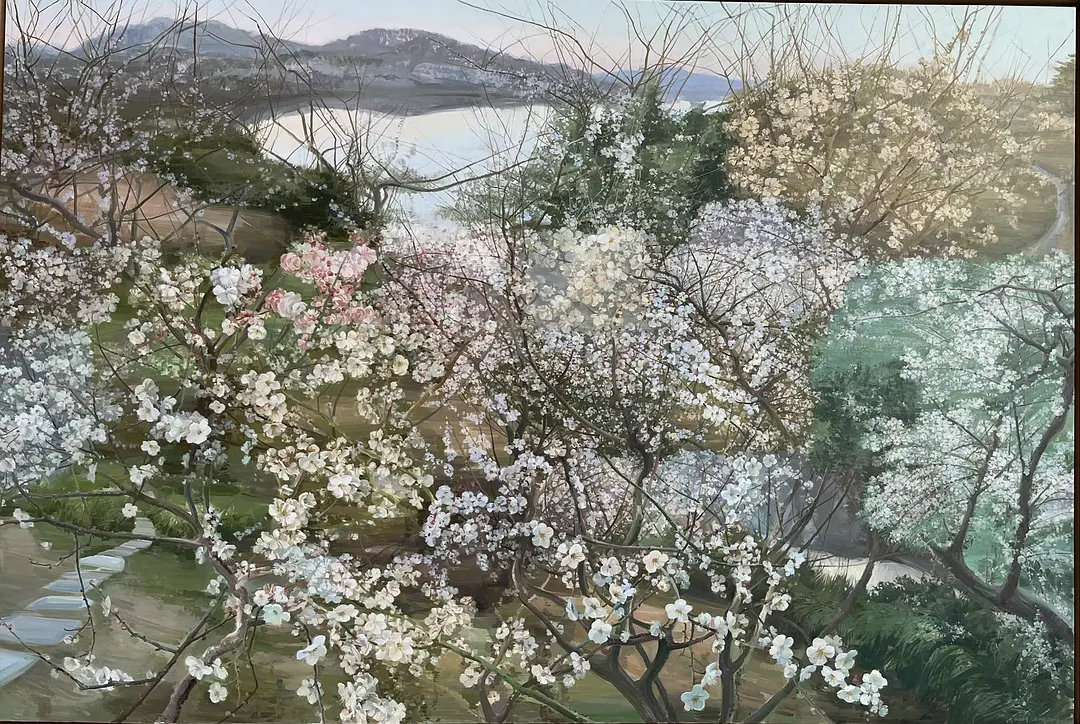
Zhong Genglue — White Notes
Painting is the art of light and shadow. The delicate transitions between light and dark reveal a painter’s skill and control. To recreate both the visual world and our understanding of it — that is a lifelong pursuit for any artist.
Light and shadow are the bones, the posture, the gaze, the spirit of painting. Just as there are ten thousand readers for Hamlet, there are ten thousand ways to interpret a single painting. Each perspective adds a layer to the narrative.
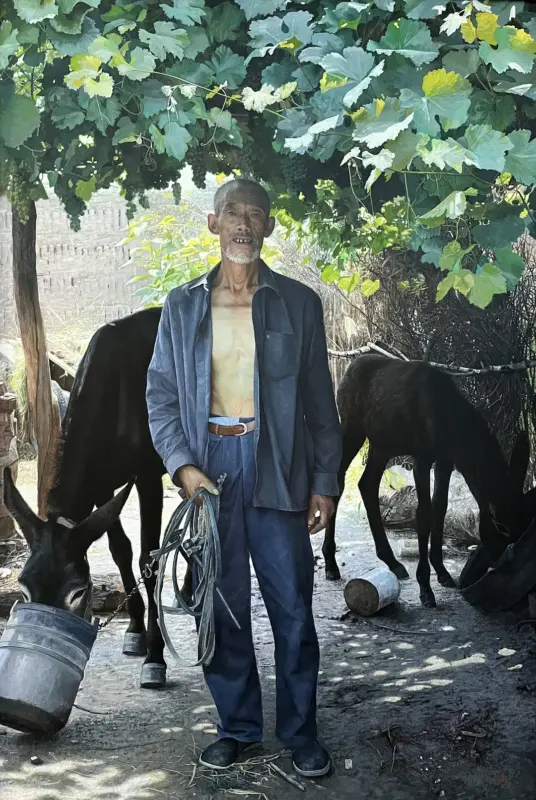
Springtime

